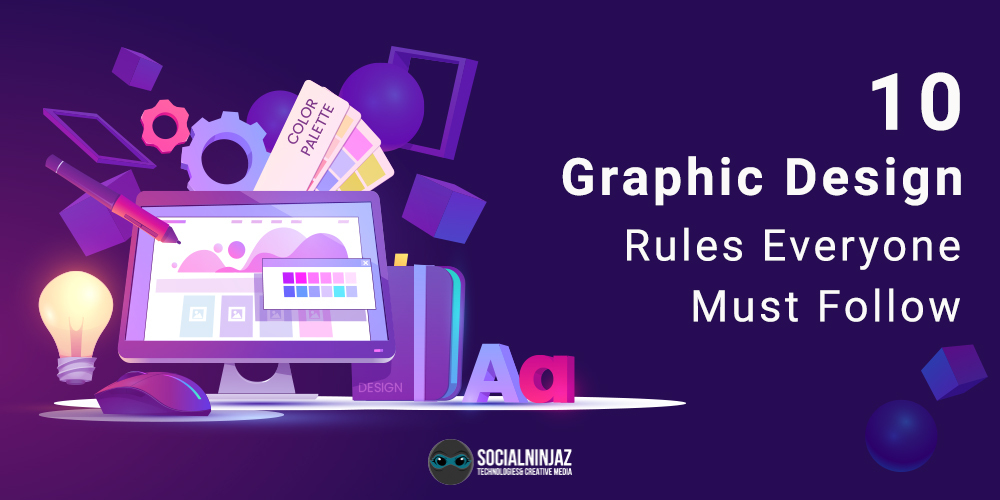Graphic design is an essential part of any business or brand. It is the visual representation of your company, and it helps establish your brand identity and set you apart from the competition. But with so many different design elements and techniques to consider, it can be overwhelming for beginners to know where to start. Whether designing a logo, creating a website, or developing marketing materials, it is essential to follow some rules and principles to ensure that your designs are successful and professional.
That is why it is critical to follow some basic graphic design rules. These principles will assist you in developing consistent and functional designs that speak to your target audience and convey the appropriate message.
Here are 10 graphic design rules that everyone must follow:
Table of Contents
ToggleUse a consistent color scheme
In graphic design, color is the most powerful tool. It can elicit emotions, convey a message, and influence purchasing decisions. It is critical to select a consistent color scheme for your company to identity and use it throughout your projects.
Choose the right font
Fonts are essentially the voice of your design. They may transmit a wide range of tones and features, so choosing the right one for your brand is crucial. Select a few fonts that complement one another and use them frequently in your projects.
Use whitespace effectively
Whitespace, also known as negative space, is the empty space in a design. It’s not just a blank canvas; it is an integral part of the design that helps to balance and organize the elements. Use whitespace to your advantage by allowing it to highlight important information and create a visually pleasing composition.
Use hierarchy to guide the viewer
Hierarchy is how you arrange the elements in your design to show the importance of each one. By using different font sizes, colors, and styles, you can guide the viewer’s eye to the crucial information first.
Keeping it simple
Simplicity is crucial in graphic design. Too many elements can clutter and distract the viewer, making it difficult for them to understand the message. Maintain a clean and simplistic design by using only the essential elements to convey the message.
Use grid-based layouts
Grid-based layouts help to create a cohesive and organized design. They provide a structure for your elements, making it easy to balance and align. Planning out your grid before starting the design process is essential to ensure a clean and professional result.
Use contrast to draw attention
Contrast is the difference between two elements. It can be color, size, or style. It helps to draw the audience’s attention to specific areas of the design. And can also highlight the hierarchy of the elements.
Stay true to your Brand Identity
Your brand identity is the essence of your company and should reflect in all your designs. Consistency is key to maintaining a powerful brand identity, so make sure you use the same color scheme, fonts, and overall aesthetic in all your designs.
Keep it legible
It doesn’t matter how visually stunning your design is if it’s difficult to read or understand. Use a legible font with sufficient contrast to ensure that the text is easily readable.
Test your designs
It is critical to test any design before finishing it to ensure its effectiveness. Show it to a few people and solicit input on what is working and what isn’t. It will help you fine-tune your design and make it the best.
In conclusion
These ten graphic design rules are essential for creating professional and impressive designs. Following these principles, you can create cohesive and effective projects that speak to your target audience and convey the right message. Whether you are a beginner or an experienced designer, it is essential to keep these rules in mind to ensure that your designs are successful.





























